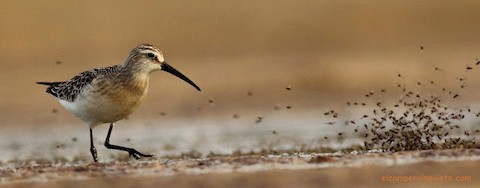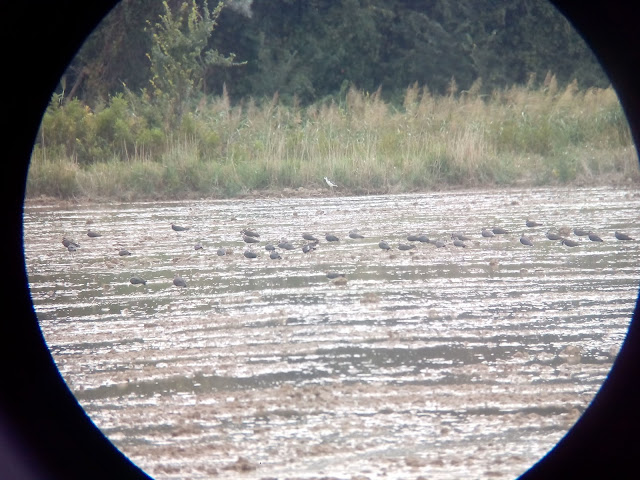Saludos camperos!
This last summer that has just finished, I have been visiting "my lp" more often due to the holidays that I have in this period. My lp is about 5 kilometers from my house and that's always an advantage if one wants to keep the trace of the postnuptial migration in those interesting months of august and september in Northern Spain. I am going to resume in this blog-entry the most interesting wader sightings in the reservoir.
The pics are made with the smarthpone handhelded and the telescope (Kowa 88) with out any kind of adapter (excuse me for the poor quality of the images but those ones are record shots and are the ones that are valid to show the wealth of this reservoir in the migration of our lovely birds).
Also I have to mention the long distances of observation ( the birds are very wary and shy in this place) and the usual heat of the summer days that make the images so fuzzy.
Also it doen't help that there isn't any kind of hut or observatory to get hidden from the birds sight.
Telescope (Kowa 88) + smartphone handheld
Wader "hat trick" ./ 30 july
Dunlin (no common) + Little stint (escarce) + Kentish plover (local rarity).
Curlew sandpiper (Calidris ferruginea) / 31 july.
This is the only bird that I have seen this summer.
Two Black winged stilts sharing the shore with an Egyptian vulture-
Greenshanks resting but always alert (4ex) / 20 august
Osprey / 22 august + 1 black tailed godwit behind!!
Snipe. Not very numerous due to the lack of reeds and protection in the shores / 08 september.
Black tailed godwit. This bird stayed three days / 08 september (estuvo tres dias en la balsa)
Ringed plovers.By far the most common species (with the common sandpiper) here this summer. In some days, there were about ten or more individuals lingering on the shores with their funny quick sprints.
Little ringed plover, always appears in the lp but never in great numbers
A juvenile Dunlin with the always wary Green sandpipers.
Some waders always tend to get together in their migration journeys.
Turnstones (2ex) / 09 september.
Always a rare bird in this inland reservoir with escarce observations. This one is the unique this year.
Whimbrel (2ex) / 10 september.
Always a nice surprise to find those elegant waders, even from a very distant point of view.
Spotted Redshank / 11 september
Always a treat here, four years ago that I had't see this northern bird in Zolina.
Sanderling / 20 september
Discovered by my LP mate Mikelgar, the only one this year!
Dunlin and a wood sanspiper feeding in the mudy shores of the East side. 22 september.
A really good one a Temminck's stint discoverd by Mikelgar (pic of Mikelgar).
The first one since 2011!!.
So I say good bye to the summer and make a warm welcome to the autumn, willing to see as many birds as I can, even if I know that the wader best period has come to an end in my Lp.
Wood sandpiper and Dunlin.
































































